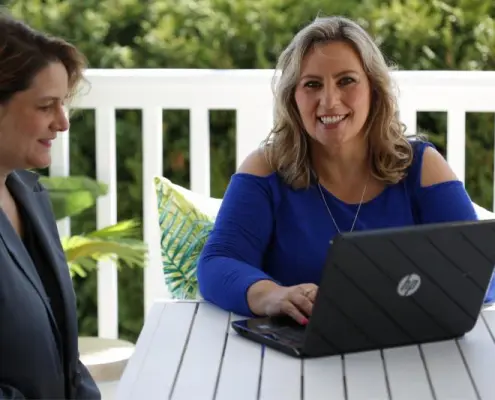How to organise yourself for maximum productivity
Most of us want to learn how to be more productive. Who doesn’t want to get more work done in less time? But aside from reading countless articles about productivity and hearing about super-heroes that wake at 4am and get everything done before breakfast, most of us don’t really take the time to consider what it takes to organise ourselves for maximum productivity.
Like most important things, the secrets to being more productive are simple – once you know them. That doesn’t mean they’re easy though! Any time we ask ourselves to change our default approaches it’s always going to be difficult. But it’s also one of the most important life skills to learn.
I’ve been studying the theory and practice of productivity for the past few years – and of course, experimenting on myself. If you want to be truly productive, here’s how to get yourself organised…
Use a Productivity System
To step up your productivity levels and get more of the important things done, you firstly need a solid productivity system. Successful people don’t just operate at a high level by accident! Whether they use it consciously or unconsciously, there’s always a system.
Of course, there are variations on the types of systems you might use, but the best ones include the three important elements; goals, tasks, and daily actions.
Define Clear Goals
Being productive is not about churning out more and more work. It’s about getting more of the important things done. Doing the things that you actually want to do.
In order to do that, you first need to know your goals. These can be defined on many different levels – they can be big, lofty, lifetime goals, or smaller, short-term goals that only relate to the next 30-90 days. To get started, it’s easier (and often more effective), to use short-term goals as these are more closely linked to action.
Think about each area of your life – or each role you play. These might involve things like; business owner, board member, parent, friend, health, etc. If you want to make changes in one particular area, make sure you name this as a separate role.
Then, for each area of life, think about your big vision. What inspires and excites you about this role? This vision can be something big! But then, think about an interim milestone for this vision. What could you achieve in the next 30-90 days that would move you closer to that vision? Set that as a goal and make it as specific as possible.
Try not to have too many goals at once as the more you have, the harder they are to achieve.
Use a Master Task List
Many people use a to-do list thinking it’s a great organisational system – but unfortunately, it’s not. The problem is, a to-do list is used for everything, and you generally try to do the whole list in a day. It’s unrealistic and it sets you up for failure. Don’t make this mistake!
Instead, use a separate master task list where you keep track of all the things you want to do. Every time you have an idea or think of something you need to do, simply enter it into your task list. Then you can free up your headspace and know that it will be taken care of.
Ideally, you’ll use a task list in a format that lets you priortise and reshuffle things around. You might also like to have a separate task list for each area of life, or a way of tagging your tasks for different areas.
By putting something onto your task list, you haven’t yet decided when it will be done – and you’re certainly not committing to do it today. Although this might sound unproductive, it’s not. The reason you won’t do it today is that you’ve already decided what your high priority actions are for the day.
Work from a Daily Action List
Yes, this is where it gets really tangible – the daily action list. At the end of each day, review your goals and tasks and ask yourself; “what are a few small but important things I could do tomorrow that would make a big difference?” Those few things become your action list for the day.
An action list is different from a to-do list as it contains only the things you actually intend to do that day. In fact, the shorter the list, the more effective it tends to be – as it shows you have really thought through what are the most important things to do.
Have you ever noticed that the most successful people know exactly what their actions are for each day? The write them in a journal, use a post-it note, or maybe a dedicated productivity tool with daily actions plans. Once you switch from using a long, demoralising to-do list to a daily action list, you’ll wonder why you didn’t start earlier.
Structure Your Days
So, with a solid productivity system in place, the next thing to do is to get some structure to your days. Do you want to exercise every day? Figure out when you’ll do that. Is time with your family important? When will that happen? When do you work best? Block out some solid working times for these hours. When do you find it harder to focus? Use these times for work that requires less energy (eg meetings, emails, research, etc).
Don’t just think about it! Map out a rough schedule for each day. If your days vary, maybe you should actually map out a schedule for the week so that you’ve got a plan for getting the most important things in.
Your working times are when you’ll start with the first thing on your action list and focus on that until it’s done. Then, you’ll move to the next thing.
Minimise Unimportant Things
If you were to log your time for a week, how would this look compared to your current priorities? Chances are there are areas of life that are not that important to you, but are somehow sucking up a lot of time.
Of course, we all have things that need to be done, but it’s also a valuable exercise to think about minimising the maintenance of life to make room for more of the important things.
For instance, if food and home cooking is one of your passions and something that’s important to you and your family, it deserves to take up a lot of time. But on the other hand, if cooking is just a means to an end, figure out ways to get it done in the shortest possible time (eg batch cooking, using a standard weekly menu, etc).
In business, the same could be said for various different activities. The point is to proactively decide what your high priorities are and focus in on those to the exclusion of all else. Sheryl Sandberg refers to this as “ruthless prioritisation” and says they only do the “very best of ideas”.
Although we may not like it, prioritising some things means saying no to others. So we also need to decide what are the things we’ll say ‘no’ to in order to focus on our top priorities.
Changing our way of operating is never easy, but all of these things can be done incrementally and will each yield significant productivity gains. But if you can combine them all, you’ll be amazed at how much progress you make towards your goals.
—————-
Fiona Adler writes about entrepreneurship at DoTheThings.com and is the founder of Actioned.com – a productivity tool for individuals and teams. With an MBA, multiple business successes, and a family living in a foreign country, she enjoys pushing the envelope to get the most out of life and loves helping others do the same.











